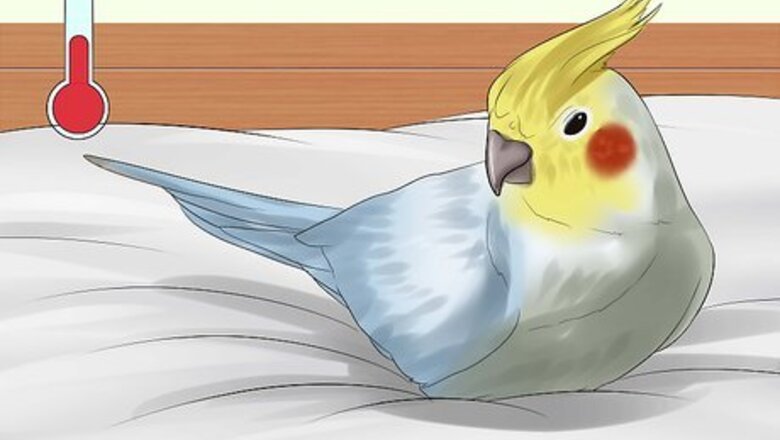
views
X
Research source
By gently misting and washing your pet bird, you can clean it. You should also maintain her cage, which can also help keep her clean.
Bathing Your Bird
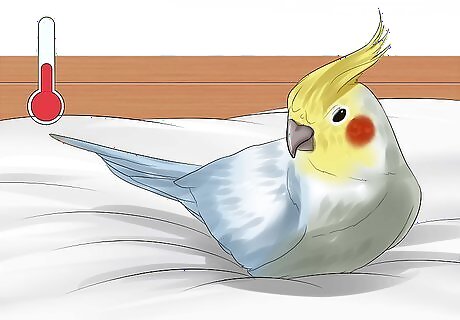
Keep your bird in a warm space. If you’re bathing your bird or allowing it to bathe itself, make sure it is in a warm space. This can keep it healthy and allows it to bathe and dry properly. Avoid areas that are cold or drafty.
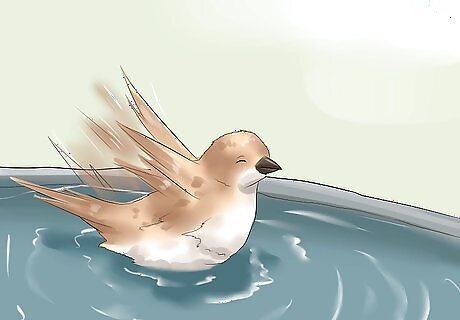
Let your bird bathe itself. Many birds will bathe themselves without human help. Place a bath in your bird’s cage or in a place where it roams freely. Allow it to bathe itself or gently put it in the water to encourage it to clean itself. Consider different types of baths such as shower perches, spray bottles, your kitchen sink, or a cage mounted bath bowl. Some birds will even rub themselves against wet branches as a cleaning method. Fill the container with 1–2 inches (2.5–5.1 cm) of water so your bird can walk and preen as it likes. Use lukewarm to room temperature water for your bird’s bath to keep it from chilling. Avoid forcing your bird to bathe. Use soap only in cases where your bird is oily and supervised by you.
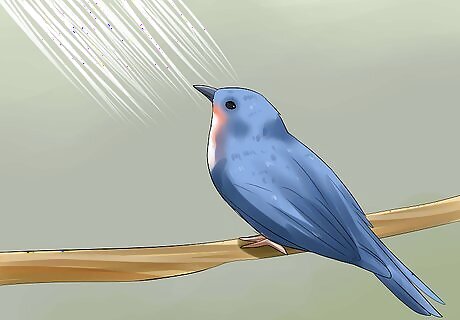
Mist your bird with lukewarm water. Depending on how dirty your bird is, you may be able to clean it simply by misting it with water. Water is generally considered the most appropriate feather spray. Gently spray your bird with a light mist of water until it appears clean. Make sure the spray is a mist or has very light pressure so that you don’t hurt your bird. For example, some birds may enjoy the spray from a sink. Spray it every day or whenever it’s necessary. Avoid misting or spraying water directly in your bird’s face. Buy a commercial bird cleansing spray if you like, though this is generally unnecessary.
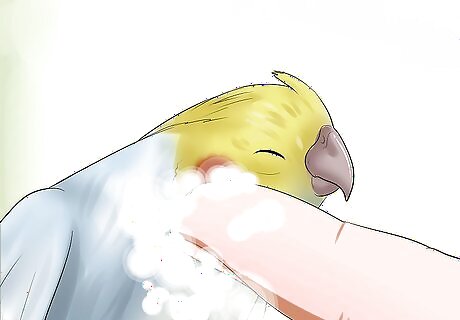
In most cases, you should not wash your bird with soap. However, it may get into oil or some other substance that comes off only with soap. Use a mild soap and gently bathe your bird to clean it. Make sure your bird is stable enough to wash with soap. Fill a container with an inch or two of water. Add a low concentration dishwashing liquid like Dawn, which has been shown to effectively and easily remove oils without irritating birds’ eyes or skin. Rinse your bird thoroughly with a gently mist or spray of water. This is important so that it dries properly and its natural waterproofing process isn’t affected. Talk to your vet if your bird is soiled with something that is difficult to remove, such as gum.
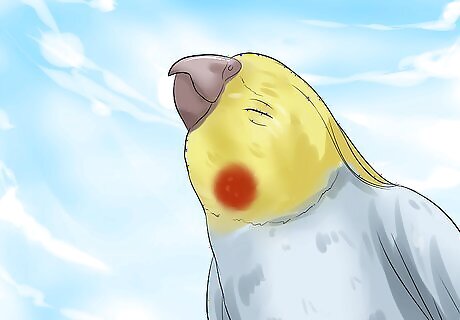
Allow your bird to air dry. Birds cannot fly with wet wings and air drying is an important part of waterproofing its feathers and getting it to fly again. Leave your bird in a warm and sunny room to air dry completely. Avoid using a hair dryer to dry your bird, which can burn its skin. Avoid drying it with a towel. Allowing its feathers to dry and rearrange themselves naturally as part of the waterproofing process. Stroke your bird gently in the direction of her feathers if the bird allows. This can help it dry. Be aware that your bird’s chest may shiver after its bath. This doesn’t mean it's cold, but is a natural reaction to generate body heat that helps dry feathers.
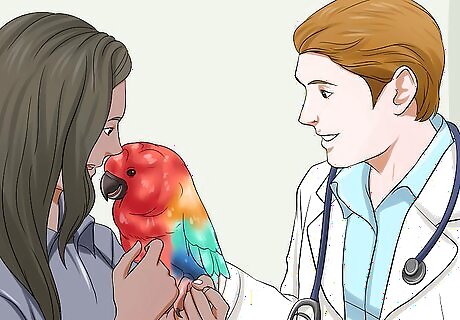
Take your bird to a vet or professional cleaner. If your bird is especially dirty or you are unsure about cleaning it, schedule an appointment with her vet or a professional bird groomer. Either can safely and effectively clean your bird so it stays healthy and happy. Find a vet specifically for your bird at the Association of Avian Veterinarians.
Maintaining Its Cage
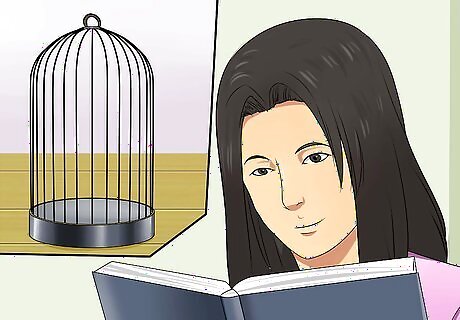
Learn the importance of cage maintenance. Birds can be very messy, but keeping their cages clean is an important part of keeping your bird clean, healthy, and happy. Remove waste and other material such as feathers every day and do a deep cleaning every week or more often if necessary. Make sure your bird’s cage is big enough and comfortable for her by considering the following elements: It should allow her to easily fly and spread her wings It should provide enough space for her food and water dishes It should have plenty of stimulation from toys and perches.
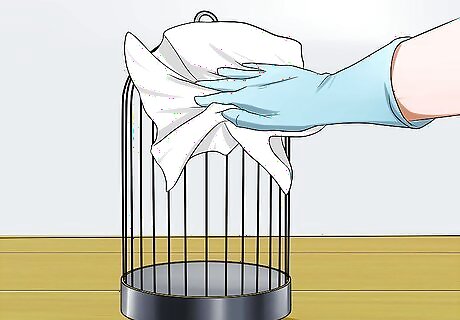
Tidy up the cage every day. You can promote your bird’s health and happiness by tidying up her cage every day. Not only can this help keep you happy and your air fresh, but may also make deeper cleaning easier. Tidy up when your bird is playing outside of her cage. Remember to give your bird as much out-of-cage time as possible, which can make maintenance easier. Change out her food and refill her bottle with fresh water. Remove any seeds or nuts from the bottom of the cage. You’ll also need to remove any feces or other feathers from the bottom of the cage, too. Place fresh liners of paper or towels on the bottom of the cage if you use it. Throw away the soiled paper. Wipe down any surfaces with a vinegar and water mixture or an enzyme spray you purchase at a pet store.
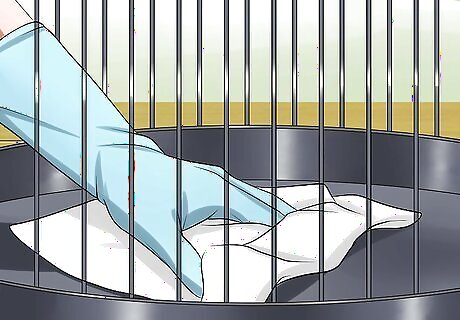
Disinfect surfaces weekly. Because birds often produce big messes—from feces, food, and feathers—it’s important to deep clean the cage and its surfaces at least once a week. Clean the cage when your bird is enjoying out-of-cage time. Remove everything from the cage, including toys and food and water dishes. Make a paste from baking soda and water or mix ¼ cup borax with 1 cup baking soda. These mixtures can scrub surfaces including perches and cage bars. Wipe down the cage bottom with a mixture of ½ cup borax, ¼ cup white vinegar, and 2 gallons of hot water. Wash food and water dishes with dish soap in the hottest water you can. Trim any frayed ends or splinters from perches and toys. Clean any areas around the cage such as blinds or carpets. You can wipe these down or vacuum them. Replace any liners at the bottom of the cage with fresh material.
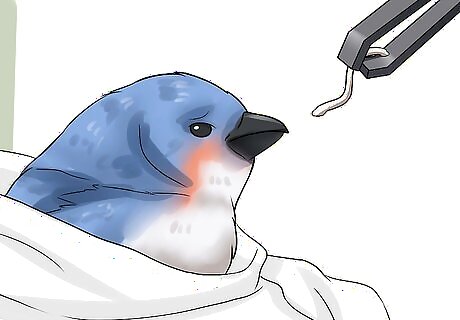
Watch for signs of illness. Cage maintenance can alert you to possible illness in your bird. If you notice any signs of illness in your bird, take her to the vet as soon as possible. Some of the signs of illness in bird visible through cage cleaning include: Not eating food Throwing up, including undigested or half-digested food stuck to strange places on the cage Discolored, undigested, or runny poop Ragged or plucked feathers at the bottom of the cage Blood anywhere in the cage. Lack of urine or oddly colored urine.




















Comments
0 comment